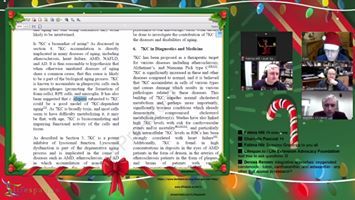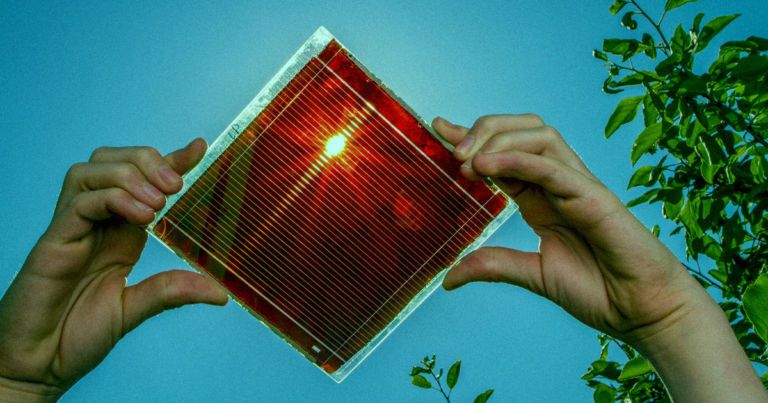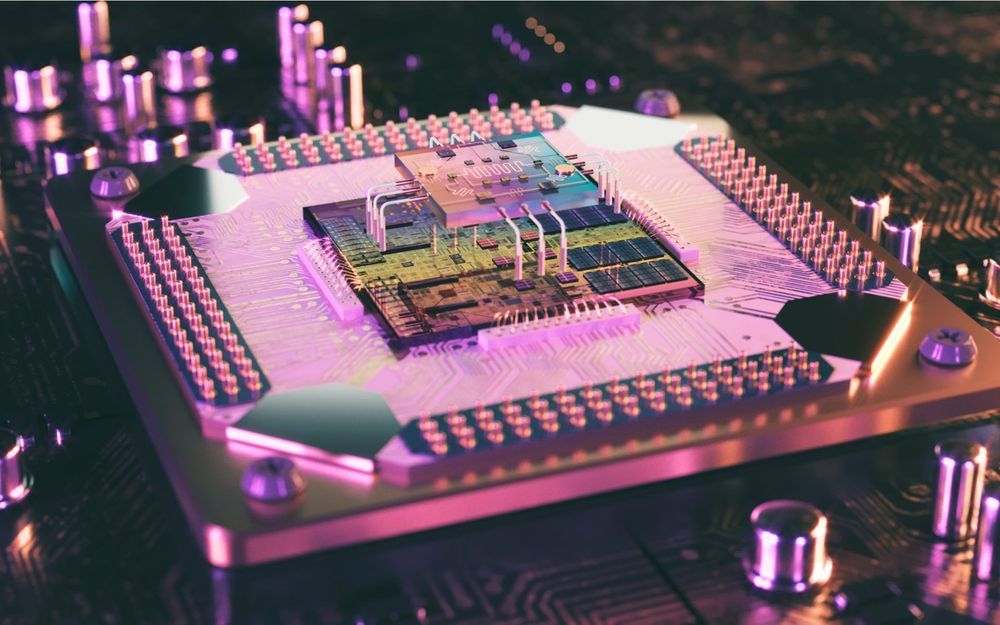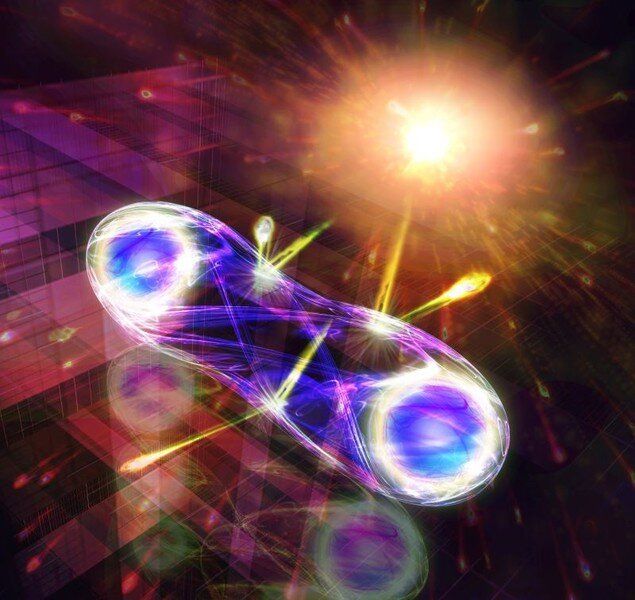Page 8126
Dec 17, 2019
The First Evidence That Drugs Could Turn Back the Clock on Our Biological Age
Posted by Paul Battista in categories: biotech/medical, genetics, life extension
After decades of research, here it is: the first promising evidence in humans, albeit imperfect and early, that a cocktail of three drugs is enough to reverse the epigenetic clock—a measure of someone’s biological age and health.
The results came as a surprise to even the research team, who originally designed the trial for something a little less dazzling: to look at human growth hormone’s effects on the thymus, the cradle of the body’s immune system that deteriorates with age.
“Maintained immune function is seen in centenarians,” and thymus function is linked to all-cause mortality, explained study author Dr. Gregory Fahy at Intervene Immune, based in Los Angeles, California. “So we were hoping to use a year of growth hormone to maintain thymus function in middle-aged men, right before the tissue’s functions take a nosedive,” he said.
Dec 17, 2019
Scientists Are Working on Spray-On Solar Panels
Posted by Shane Hinshaw in categories: solar power, sustainability
Perovskites have been a hot research topic for the past 10 years, but we think we really have something here that can move us forward.
Dec 17, 2019
Journal Club December – 7-Ketocholesterol and Atherosclerosis
Posted by Steve Hill in categories: biotech/medical, life extension

For the December edition of the Journal Club hosted by Dr. Oliver Medvedik, we are joined by Dr. Matthew O’ Connor (Oki) formerly of SENS Research Foundation and now the head researcher at Underdog Pharma, a spin-off biotech company that is developing research conducted at SENS into a hopefully viable solution for heart disease.
Dr. O’Connor will be giving a short presentation covering the story of 7-Ketocholesterol, a harmful byproduct of oxidized cholesterol that Underdog believes is a suitable target for therapeautic intervention to prevent the formation of artery plaques, the basis of atherosclerosis. Then, we will review the new paper that his team has published and follow it up with discussion and questions.
Dec 17, 2019
Google claimed quantum supremacy in 2019 — and sparked controversy
Posted by Genevieve Klien in categories: quantum physics, supercomputing
Google’s quantum computer outperformed the most powerful supercomputer on a task, the company reported. But some scientists aren’t fully convinced.
Dec 17, 2019
Watch SpaceX launch a Boeing-built satellite and attempt to recover its spacecraft fairing live
Posted by Genevieve Klien in categories: electronics, satellites
SpaceX is launching yet another rocket this evening — its 13th this year. This Falcon 9 launch is set for liftoff sometime during a window that’ll last for just over an hour, and that opens at 7:10 PM EST (4:10 PM PST) and extends to 8:38 PM EST (5:38 PM PST). The launch will use a first-stage rocket booster that previously flew in May and July of this year, and it’ll include an attempted landing of that booster, as well as a try at recovering both halves of the fairing used to protect the spacecraft’s cargo as it ascends to space.
The cargo itself is a satellite built by Boeing that hosts two payloads for different clients, including Japanese pay TV broadcast service provider SKY Perfect JSAT, and a high-speed broadband connectivity satellite developed by Kratos called Kacific1. The Falcon 9 spacecraft will be looking to deliver these to orbit around half-an-hour after liftoff.
It’s definitely going to be worth watching the secondary mission elements of this one, as SpaceX has so far succeeded only in recovering one half of a fairing used during a mission with a single barge stationed in the ocean. This will see it try to catch both pieces, using two ships named “Ms. Tree” and “Ms. Chief” that have been retrofitted with a large net assembly specifically for the purpose.
Dec 17, 2019
AI super resolution lets you “zoom and enhance” in Pixelmator Pro
Posted by Genevieve Klien in categories: information science, robotics/AI
Machine learning and AI can now restore lost detail to blurry images. Many companies and labs have created such “super resolution” algorithms, but this software is now becoming commercially available, too. Pixelmator Pro is among the first image editors to offer such a tool.
Dec 17, 2019
5 Habits That Will Help Your Brain Stay in Peak Condition
Posted by Genevieve Klien in categories: biotech/medical, health, neuroscience
Yes, the simple act of juggling has recently been linked with better brain function. A new study reveals that learning to juggle may cause certain areas of your brain to grow.
The study found that volunteers who participated in a juggling exercise improved white matter in two areas of their brains involved in visual and motor activity.
‘We have demonstrated that there are changes in the white matter of the brain — the bundles of nerve fibres that connect different parts of the brain — as a result of learning an entirely new skill,’ explains Dr Heidi Johansen-Berg of the Department of Clinical Neurology, University of Oxford, who led the work.
Dec 16, 2019
3 Million Bitcoin in 2 Seconds: Google Quantum Computer
Posted by Quinn Sena in categories: bitcoin, computing, quantum physics
Less than 3 million Bitcoin (BTC) remain to be mined, with the process expected to take around 121 years. Some allege however, that Google’s quantum computer, Sycamore, could do it in “less than 2 seconds”. But is that really possible?
One computer to rule them all
Despite having the most difficult network to mine, Bitcoin (BTC) could have met its match in the face of the Google’s quantum processor, Sycamore. According to one medium post, the device has enough computational power to mine all the remaining BTC in less than two seconds.
Dec 16, 2019
How to use entanglement for long-distance or free-space quantum communication
Posted by Paul Battista in categories: encryption, internet, quantum physics
Entanglement, once called “spooky action at a distance” by Einstein, is the phenomenon in which the quantum states of separated particles cannot be described independently. This puzzling phenomenon is widely exploited in the quantum physicist’s toolbox, and is a key resource for applications in secure quantum communication over long distances and quantum cryptography protocols. Unfortunately, entangled particles are easily disturbed by their surroundings, and their entanglement is readily diminished by the slightest interaction with the environment.
In a recent study published in the journal Physical Review X, an international team of physicists from Austria, Scotland, Canada, Finland and Germany have demonstrated how quantum entanglement can be strengthened to overcome particle loss or very high levels of noise, which are inevitable in real-life applications outside the laboratory. This strengthening is accomplished by departing from commonly used two-level quantum bits, or qubits. Qubits are bi-dimensional systems, the quantum analogue to the classical bit, with values zero or one. In this study, the researchers instead employed entanglement of systems with more than two levels. By entangling particles of light through their spatial and temporal properties, scientists have now observed the survival of quantum entanglement under harsh environmental conditions for the first time.
When it comes to distributing particles of light outside of a protected laboratory, the environmental conditions are identical to the tested ones. Therefore, the experiment is not only a proof-of-principle implementation, but is ready for long-distance quantum communication under real-world conditions. This new method could hence prove helpful for distributing entanglement in a future quantum internet.
















